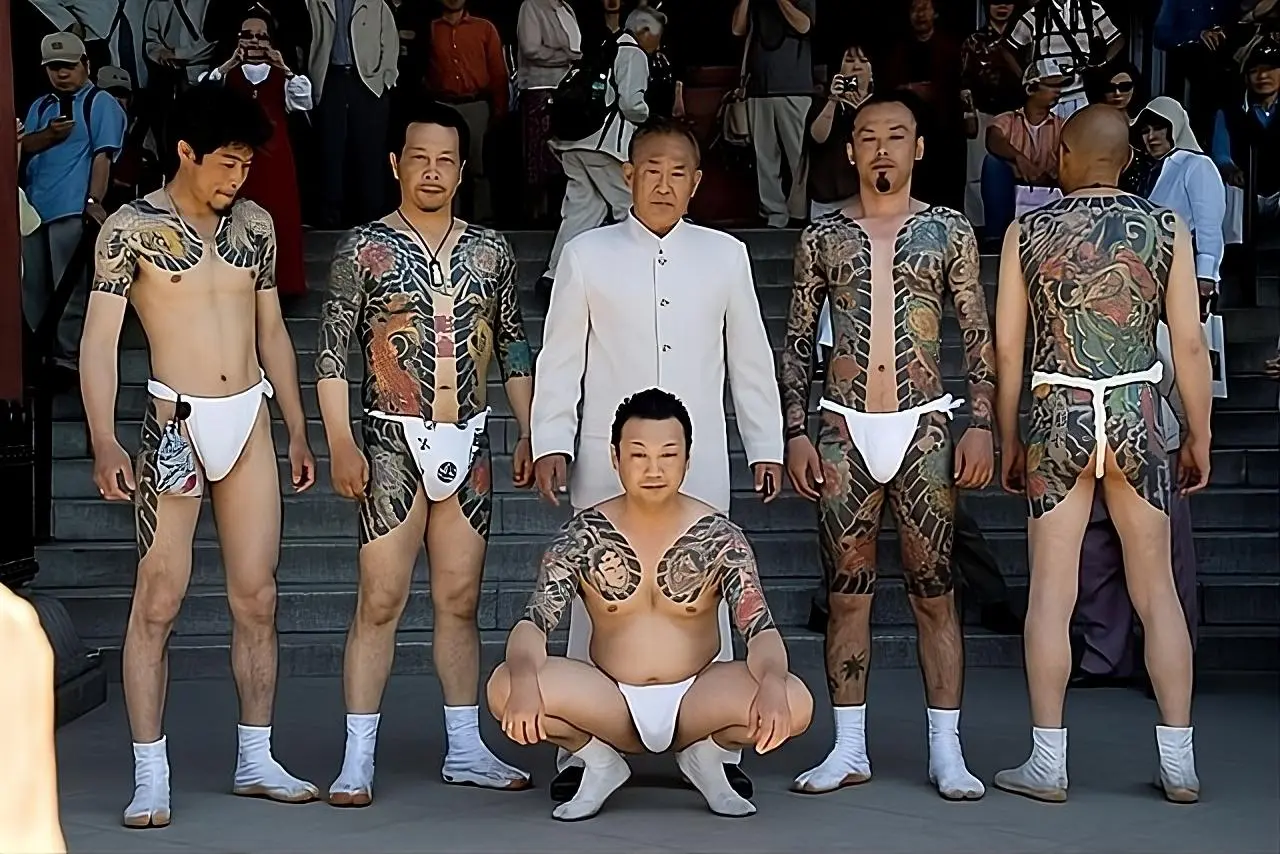The ways and the rules of the yakuza have always been fascinating to people of the west, as shown in the popularity of the Japanese crime genre in cinema as well as games like Sega’s Like a Dragon: Yakuza, whose Amazon Prime live action remake is due for release on October 14. Beyond the gritty lifestyle, however, there is a captivating aesthetic to be found: the intricate and symbolic tattoos adorning the skin of yakuza members.
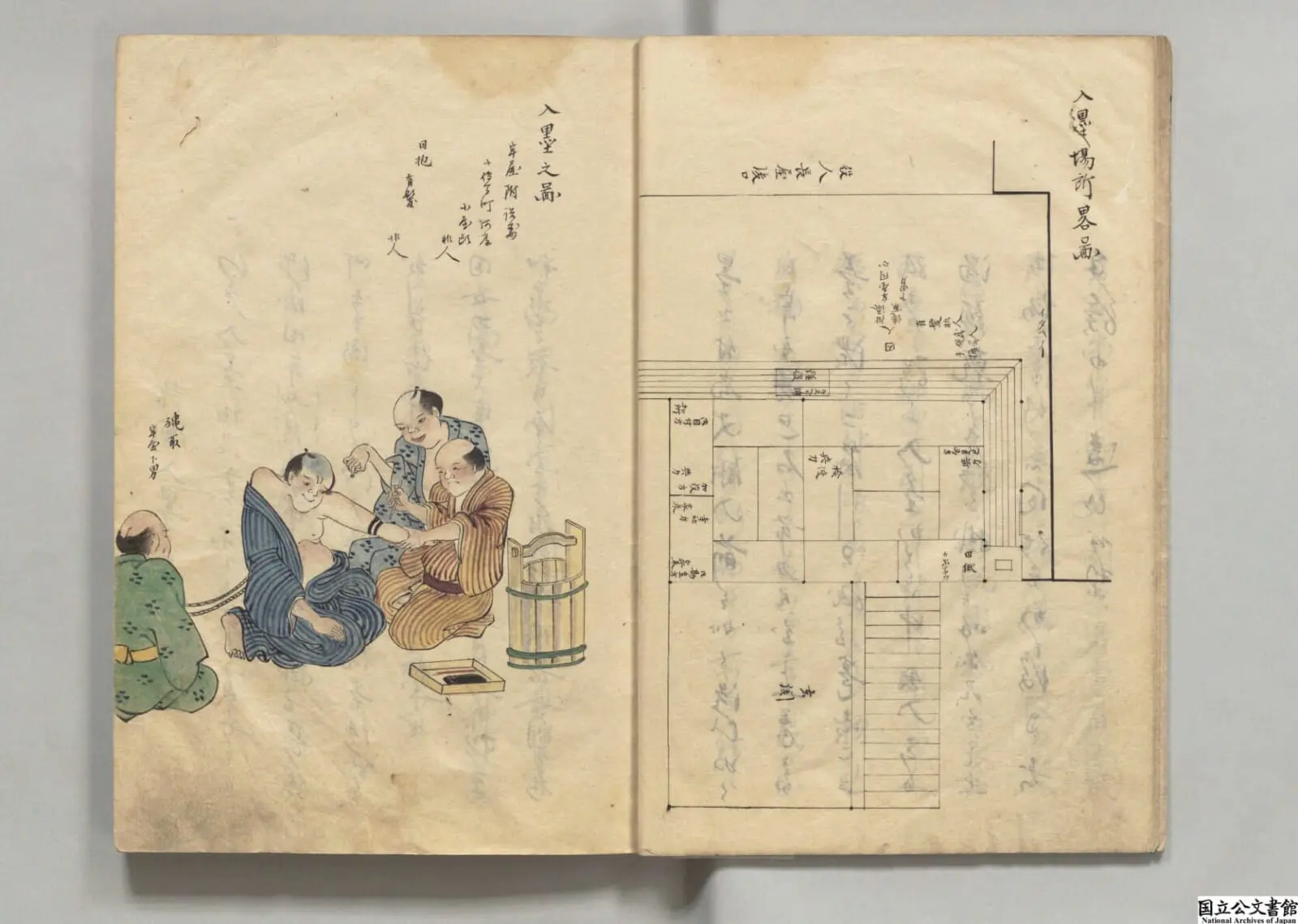
The History of Tattoos: From Punishment to Pride
In the Edo period (1603–1868), tattoos were used to mark criminals. Those who committed serious crimes were often subject to irezumi-kei — a tattoo penalty — which saw them brandished with specific patterns on their faces or arms as a form of public humiliation and a permanent reminder of their wrongdoing.
Centuries on and there is still a stigma associated with tattoos in Japan today. Many onsen, beaches, swimming pools and gyms require tattoos to be covered up, reflecting the lingering societal aversion to visible body art.
Yakuza members, however, embrace irezumi as a rite of passage and a way to demonstrate their attributes. They typically receive tattoos from a designated horishi tattoo artist who inks their designs by hand. For young thugs seeking to join the yakuza, the cost of the tattoo is often offered as an incentive if they agree to membership and work off the debt.
When a horishi agrees to tattoo a young yakuza member, they often engage in a deep conversation, with the member sharing their life story. The lengthy and painful process of getting a tattoo requires significant endurance and symbolizes their commitment to the gang.
Together, they create a tattoo design that reflects a vision for good fortune. So, what do these tattoos reveal about the yakuza members they adorn? While this is not an exhaustive list, here are some common motifs and what they represent.
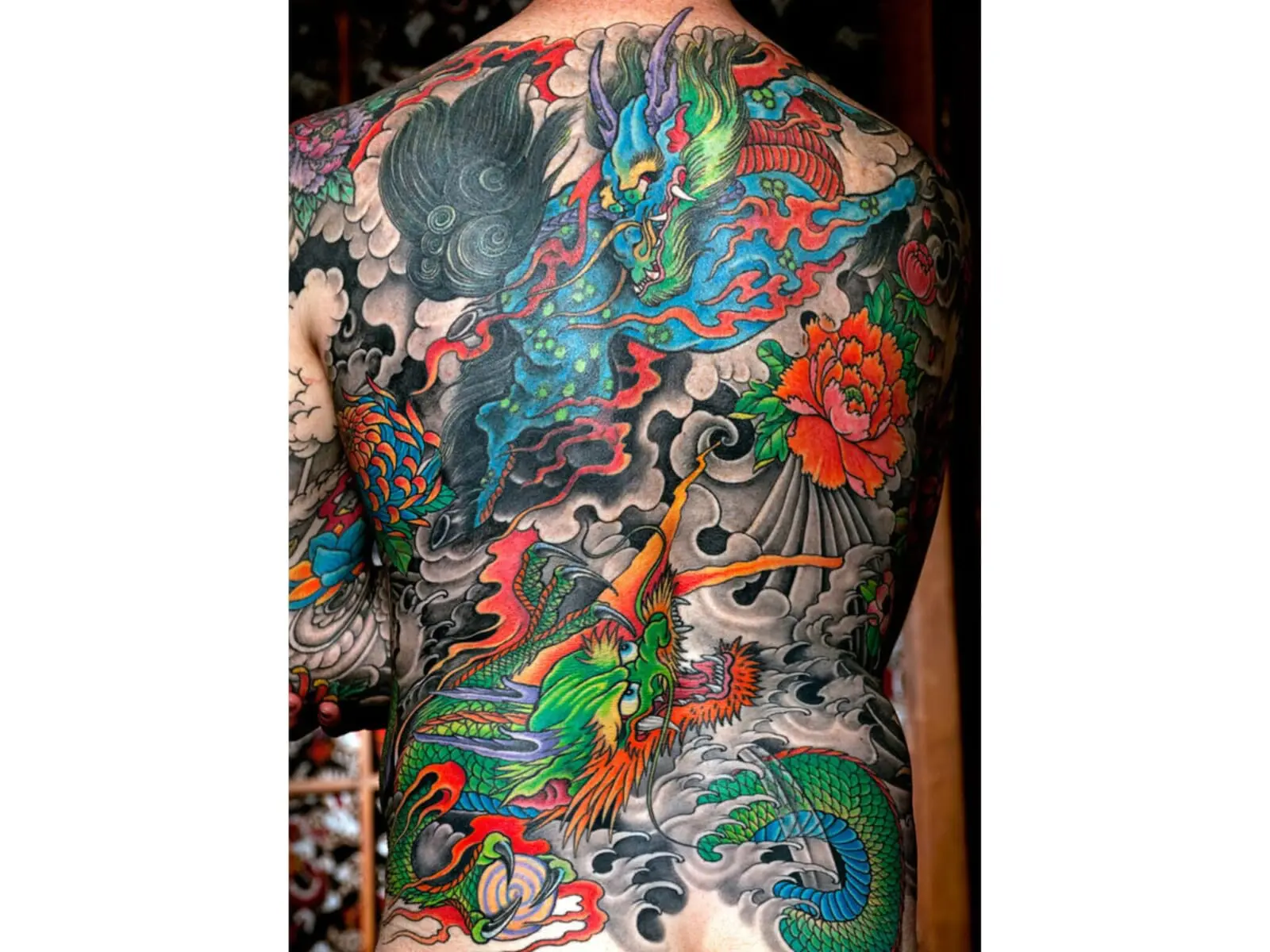
Dragons
Dragons have been a cornerstone of Japanese culture for centuries. They symbolize wisdom, strength and protection. Their color adds depth to their meaning. Black represents wisdom and ancestral ties, gold signifies great personal traits, yellow symbolizes nobility, blue denotes respect and forgiveness and green is associated with Earth and nature.
Beyond color, there are also multiple dragon variants. For instance, Kazuma Kiryu — the lead character in Like a Dragon: Yakuza — has a tattoo of an Oryu dragon: a rain deity that lends its power to the emperor.

Tigers
Tigers are associated with metal and earth, symbolizing raw power and strength. Often portrayed as rivals to dragons, they represent opposing but equal forces. Tigers are sometimes combined with dragons to represent the Yin and Yang balance of the universe.
The tiger, associated with Yin, is grounded and accumulates quiet power. The dragon, which represents Yang, has active energy that creates movement. A combination of the two symbolizes a perfect balance of forces.
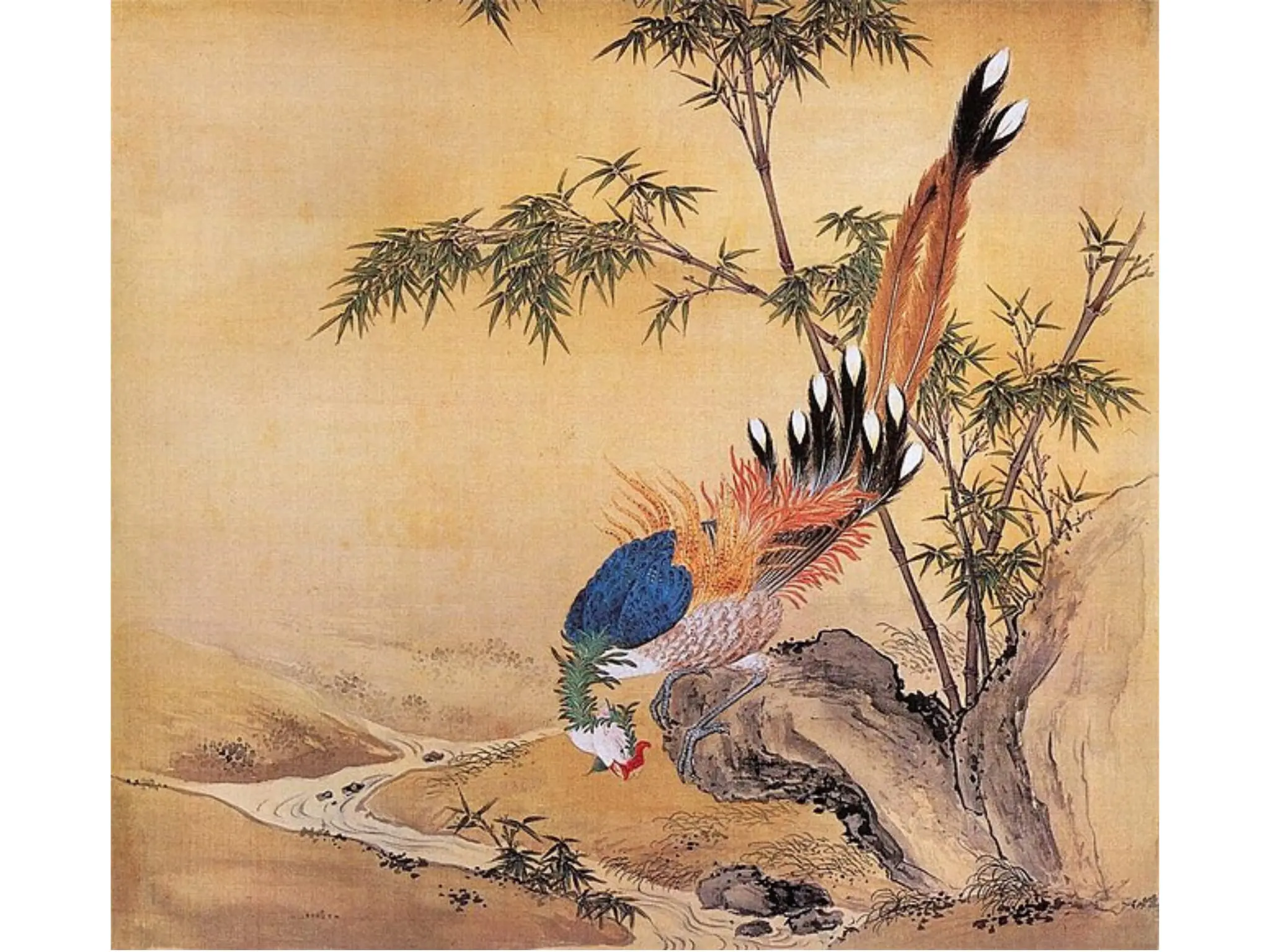
Hou-ou (Phoenix)
One example of the meaning behind the phoenix design is the arrival of good fortune, compassion and elegance. According to ancient Chinese lore, the phoenix, also known as the hou-ou, is said to have five colored feathers: red, yellow, blue, white and black. It is a symbol of peace and prosperity.

Koi (Japanese Carp)
According to legend, only a few koi are able to swim past the Dragon’s Gate waterfall, a daunting obstacle on their journey. Those that succeed are rewarded by transforming into dragons, making them a powerful symbol of perseverance and determination.
Different colors also have varying meanings. For example, a black carp symbolizes masculinity and success in overcoming obstacles. A red carp, meanwhile, represents female figures, as well as intense love, power and bravery.
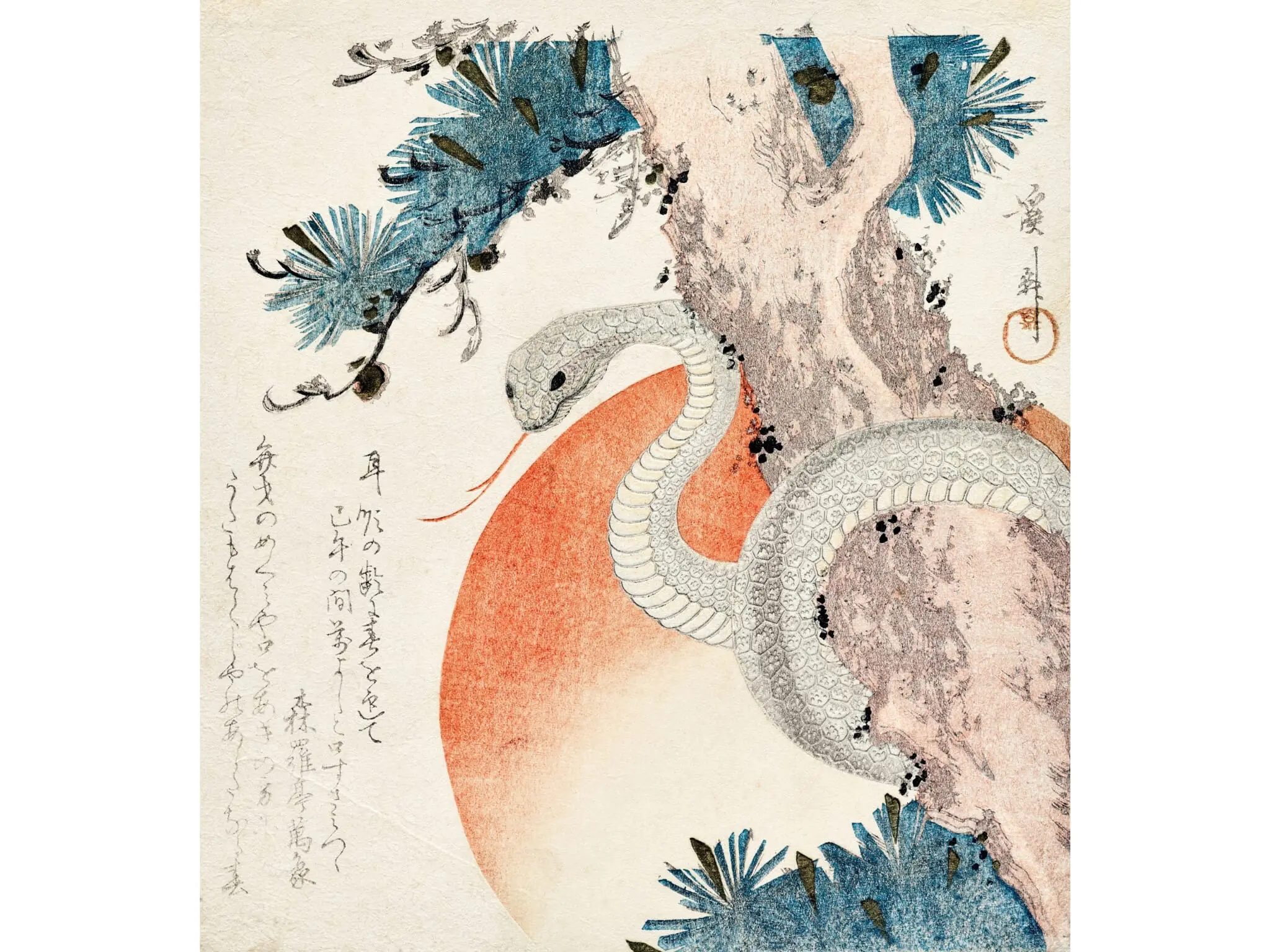
Snake
In Japan, snakes are associated with wealth, good luck, wisdom and protection. They are also seen as guardians and bringers of rain. Along with their ability to shed skin, snakes have long been believed to symbolize rebirth and infinity, bringing infinite wisdom and wealth.

A tattoo of Fudo Myo-o
Buddhist Figures
There are countless types of Buddhist figures, such as Fudo Myo-o, also known as the Immovable One. He is a protector of Buddhist teachings, dispels obstacles on the path to enlightenment and compels evil forces to yield.
You then have the Amida Buddha, who is seen as a compassionate deity, guiding people to a blissful afterlife in the Western Pure Land. Amida’s attributes of infinite life and light symbolize his ability to save all beings from suffering and lead them to enlightenment.

Kukai (Kobo Daishi) Practicing the Tantra, with a Demon (Oni) and Wolf, by Katsushika Hokusai
Oni
Oni are a type of yokai, or Japanese spirits, often depicted as demons. Their portrayal varies widely across different stories, sometimes as benevolent figures and other times as malevolent ones. They are often symbolic of strength, protection, fury and warding off evil.
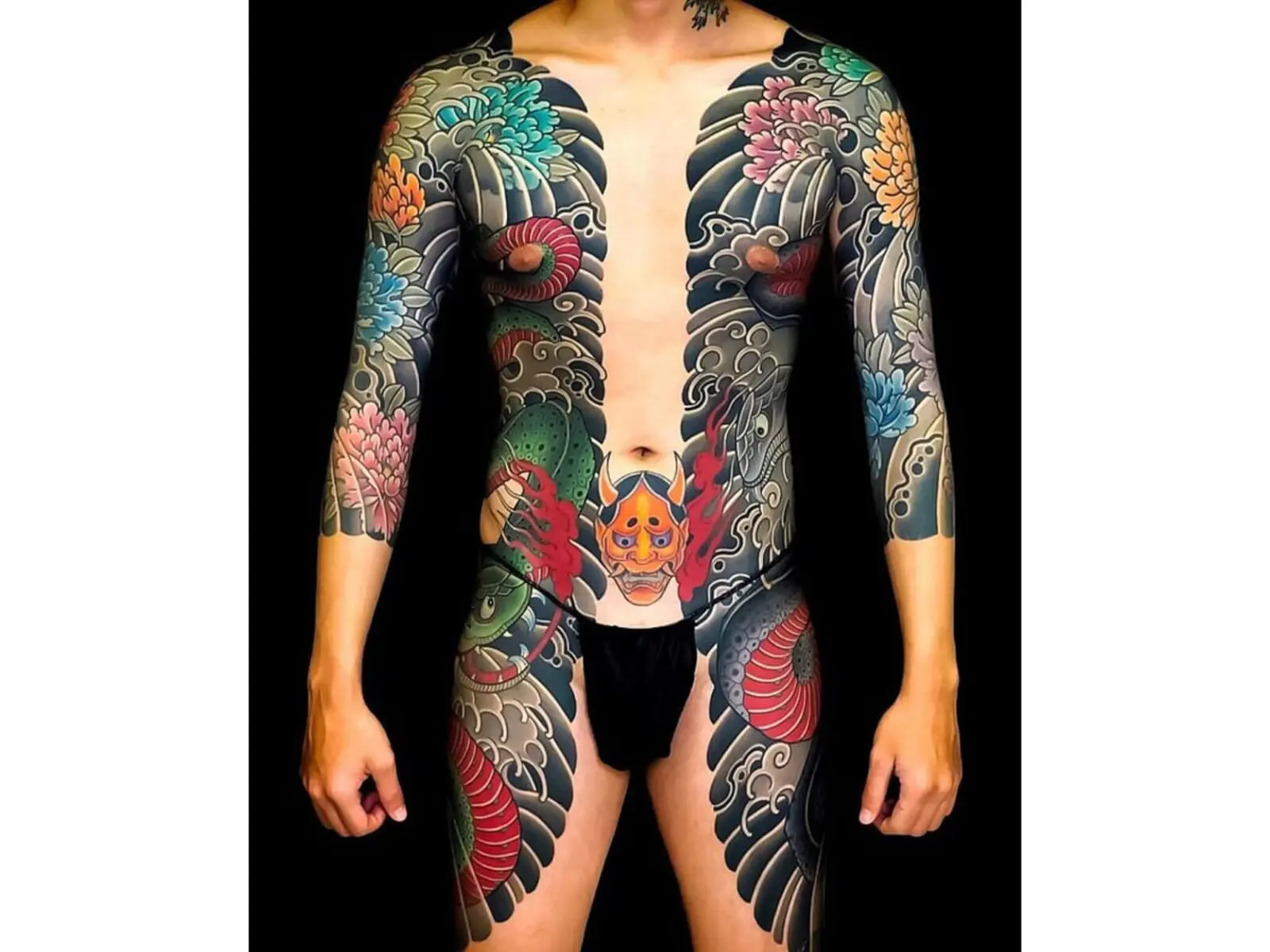
A tattoo of a hannya mask below the navel
Hannya
The Hannya mask comes from Japanese Noh theater, representing a woman consumed by jealousy and rage. It conveys strong emotions like anger, sorrow and resentment. It typically symbolizes passion, bravery, jealousy and humanity. Red masks emphasize anger and rage, while white masks can suggest a more refined or spiritual interpretation.
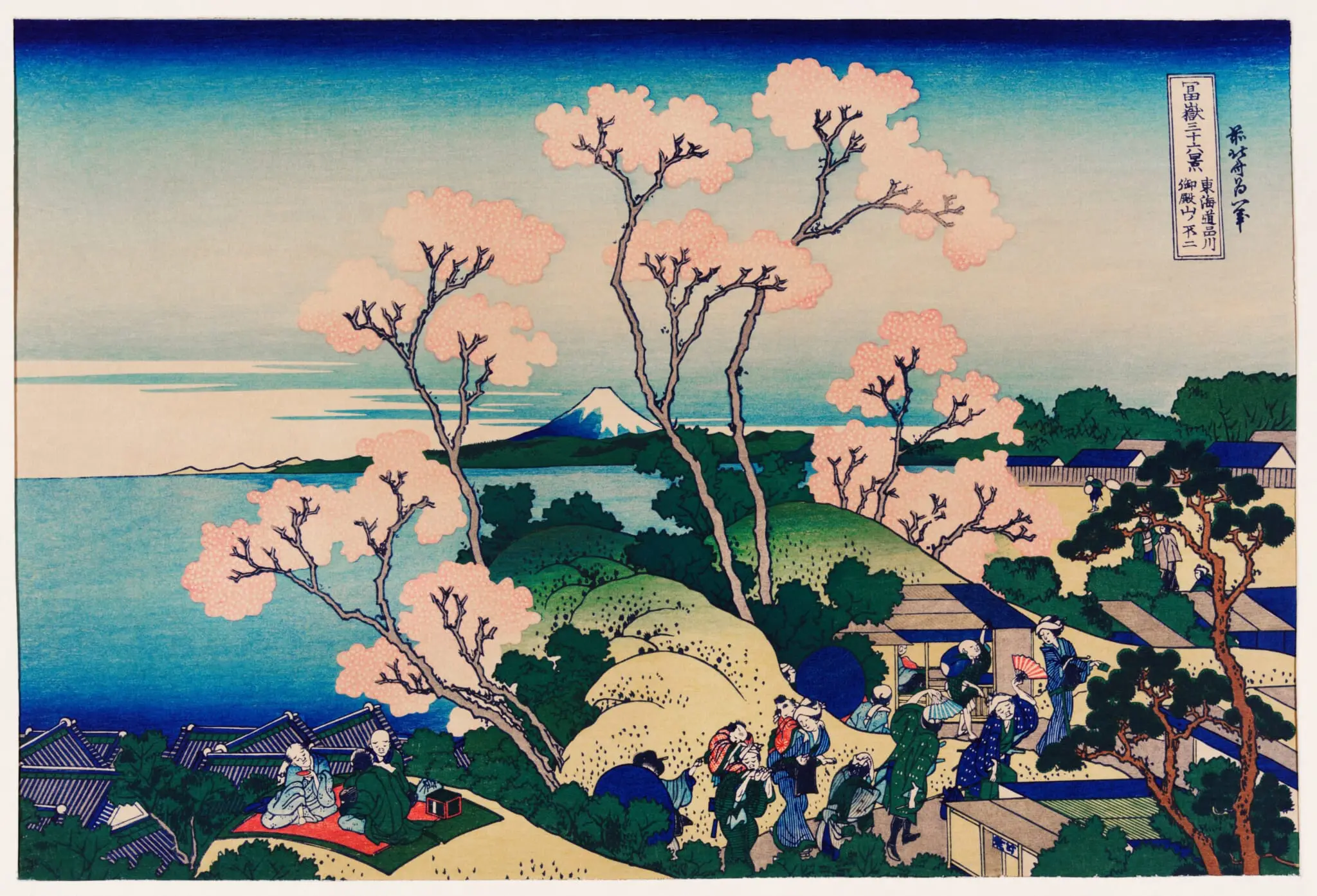
Cherry Blossoms
Due to their short lifespan, cherry blossoms are a symbol of impermanence and beauty. They also have ties to the way of the samurai. As the proverb says, “Among blossoms the cherry blossom, among men, the warrior.”

